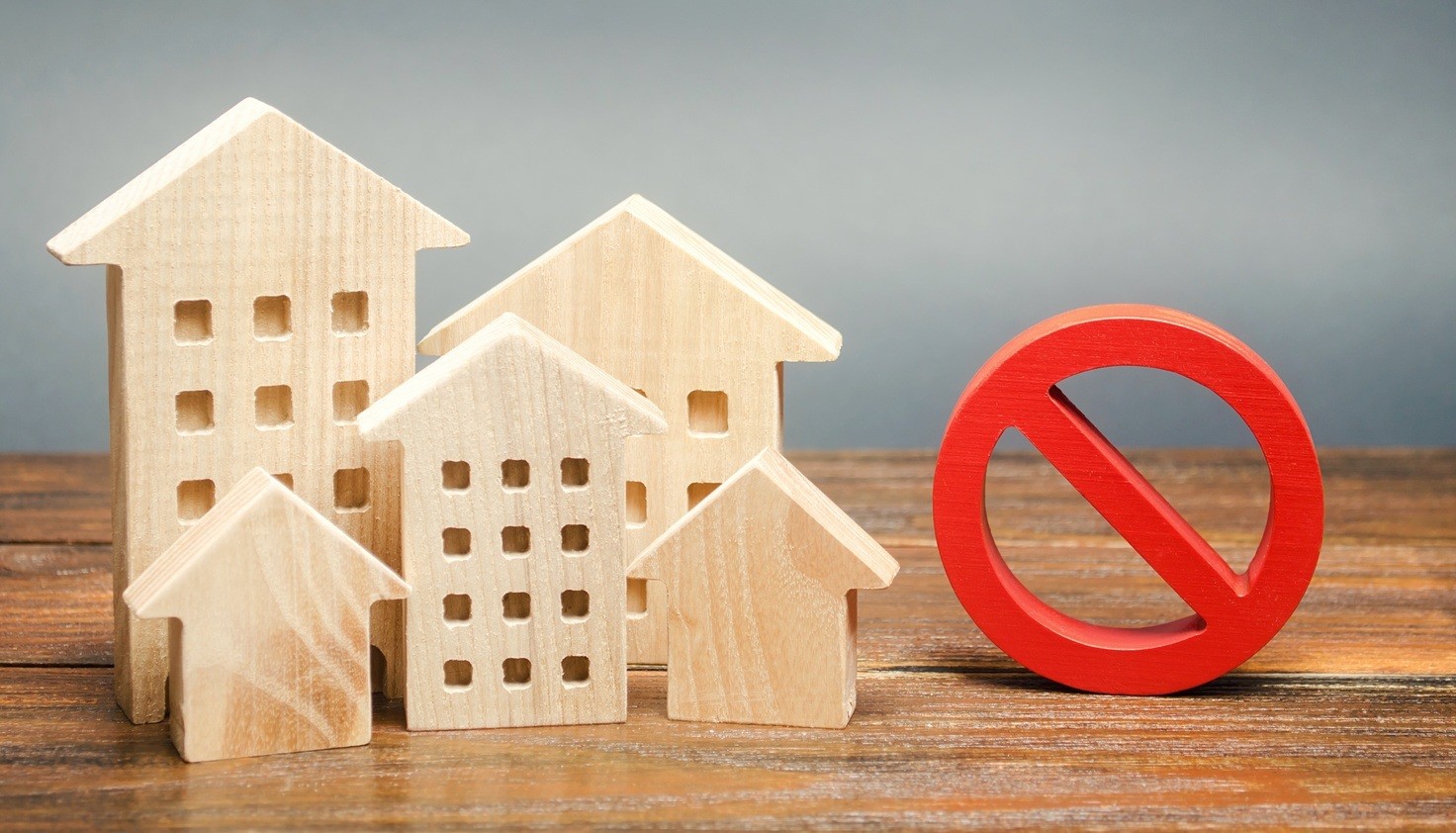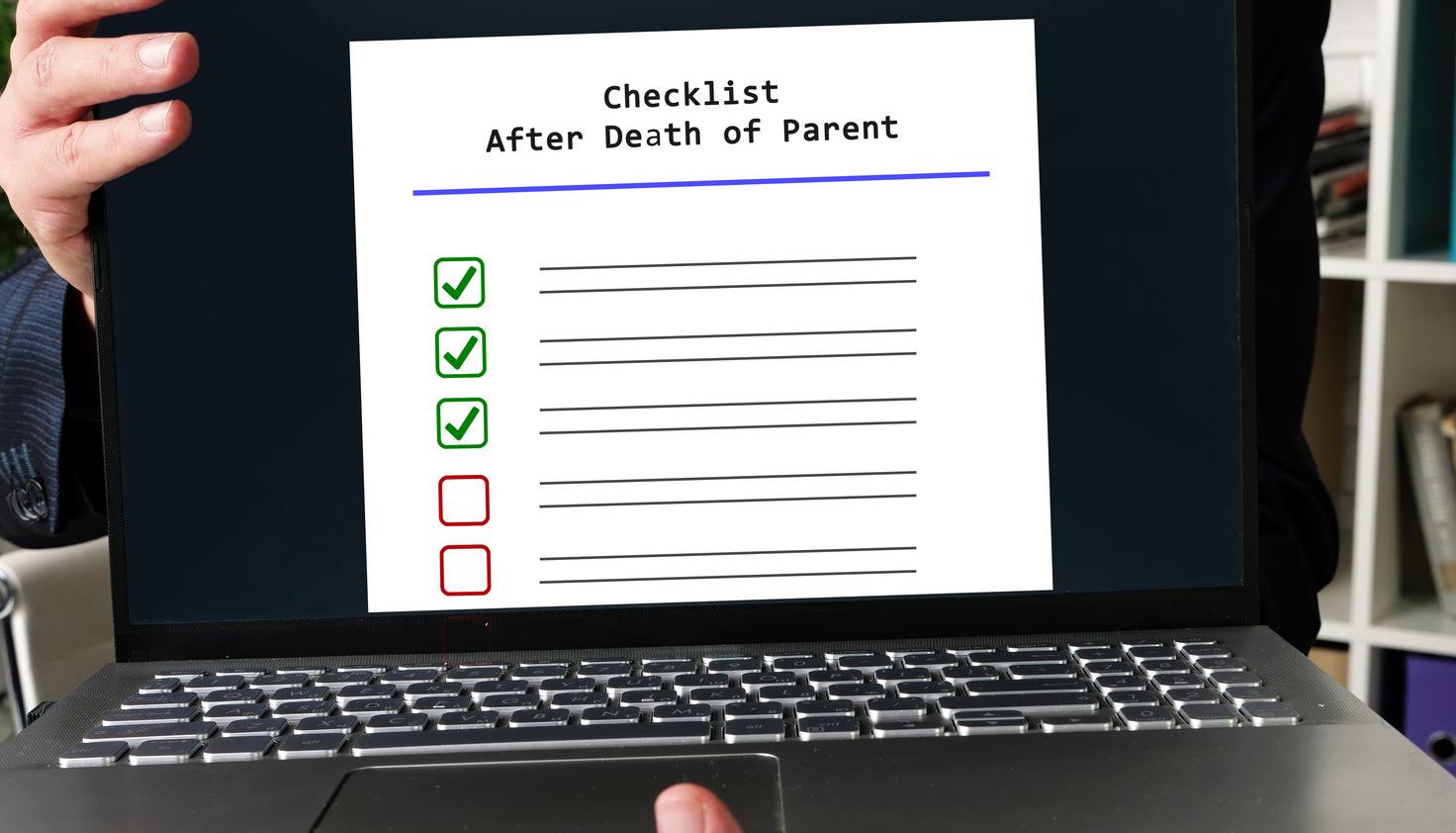One of the most costly mistakes for home sellers is making repairs that don’t bring a return on investment.
But it’s not easy to resist going down the rabbit hole of fixing things in a house before listing it.
That’s exactly what many sellers experience.
The reason?
Because they think their house won’t attract interested buyers unless it’s in tip-top shape.
So they end up making improvements to their home that end up costing a significant amount of time and money.
Selling a house should be a financial gain, not a massive drain.
The key to doing that?
Only make repairs and upgrades that increase the perception of your home’s value for prospective buyers.
Here’s everything you need to know about what not to fix when selling a house.
Why you shouldn’t make certain repairs when selling a home
Think like a homebuyer for a minute.
How would the selling features of a property impact your decision to submit an offer?
I’m not talking about things such as the location, schools, or layout.
I’m talking about cosmetic stuff.
For example, let’s say you’re viewing a home that has:
- An upgraded kitchen
- Newer hardwood flooring
- Remodeled bathrooms.
Those features are likely to significantly influence your decision to make an offer on the house, right?
They are for most future homeowners.
But the question is “why?”
Emotionally driven buyers who are influenced by the visual appearance of a home.
That’s the exact reason why you shouldn’t fix certain things when selling a house.
The home repairs that don’t pay off are generally the ones that don’t have a visual impact on potential buyers.
Savvy real estate investors turn a profit because they understand this.
They know that they shouldn’t spend time and money fixing every single thing when flipping a property.
So they don’t –– they avoid repairs and upgrades that won’t make them money.
Incorporate this same mindset when selling your home and you’ll save money by knowing which fixes you should skip.
How to identify what you should not fix when selling a house
Before we get to the do not fix list, let’s discuss how you can pinpoint which fixes you should avoid before listing your house.
Because here’s the thing…
Your property is unique.
And the list we’re going to go over consists of fixes that most home sellers should steer clear from making.
But they may or may not apply to your property –– or to your local market conditions.
Here are three things that will help you determine which repairs you should not make when selling.
1. Schedule a pre-listing home inspection
A home inspection can be a shortcut to knowing what not to fix.
How?
Because the inspection report will tell you exactly which home repairs you should consider making.
Which means anything not included in the report is a potential fix you should avoid.
But that doesn’t mean you need to fix everything the inspector finds.
Making repairs is optional when selling a home.
In fact, you can get a pre-sale inspection and still sell as-is.
The benefit is that it helps eliminate the guesswork in deciding what you shouldn’t fix.
But there’s also another advantage…
Having an inspector come out to your property before it’s listed will increase your chances of the buyer not asking you to make repairs.
And it gives buyers confidence in making their best offer because it provides them with answers to the unknowns.
That’s why an inspection is something you should consider when getting your home ready for sale.
2. Get advice from the right real estate agent
Some home sellers rely on their agent’s advice when determining what not to fix.
While others go at it alone.
Is that you?
If so, you should highly consider seeking feedback from an experienced real estate professional.
Because a local real estate agent can give you strategic advice.
You’ll get an unbiased viewpoint of what buyers look for in a home.
And that viewpoint can provide you with insights into which repairs and upgrades will bring you a return on investment –– and which ones won’t.
In other words, you’ll save time, money, and stress (assuming you have the right real estate agent).
Ask your agent for their opinion about all possible repairs and upgrades.
First, get their feedback about the home inspection and which repairs might make sense.
Then ask about which upgrades to your home (interior and exterior) might be worth making.
The key word in those last two sentences is “might.”
Because the goal here is to write down the possible repairs and upgrades.
Then tackle this last step to eliminate the things that you shouldn’t fix before putting your home on the market.
3. Perform a cost-benefit analysis of potential repairs and upgrades
Compiling a do not fix list with your real estate agent is pretty straightforward.
First, go down the list of items you wrote down and ask these two questions:
- Will it increase my final sale price?
- What’s the estimated cost?
Many repairs and upgrades can add value to your home.
But some will cost you more than the added equity.
So cross off the fixes that will result in a big deficit.
Keep the ones that have a minor deficit as well as the ones that look profitable.
And then ask the following two questions to finalize the list of fixes you should avoid:
- Can it help my house sell faster?
- How long will it take?
This is where you want to weigh the cost versus the benefit.
Any repairs or upgrades where the cons outweigh the pros will cost you too much money.
So cross them off your list.
The remaining items are the improvements you can consider making to your home before listing it.
Don’t fix these 9 things when selling a house
Here are the things you shouldn’t fix when selling your house (and what you can do instead).
1. Skip renovating a non-master bathroom
A master bathroom is a major selling point for most house hunters.
It functions as a personal retreat that can make a home more attractive.
The rest of the bathrooms?
Not so much.
Secondary bathrooms don’t attract buyers like a remodeled master bath because they’re not used as much.
So don’t waste money on a major renovation of non-master bathrooms.
The renovation costs are almost always going to be much more than the value it would add to your home.
What to do instead:
Focus on the visual flaws that look like an eyesore.
Do any of your bathroom walls show signs of excessive moisture or paint chipping?
Do they have a striking paint color?
If so, go to your local hardware store to buy neutral-colored paint.
Generally, anything white or slightly off-white works best.
Is your vanity outdated?
Replacing it can be a very cost-effective way to make your secondary bathroom pop.
Upgrading any outdated fixtures can also pay off.
But avoid combining brass with satin nickel or chrome for a cohesive look.
And check the lights in your bathrooms to see if you need to replace any bulbs.
The best bathroom lighting mimics natural daylight and has a cool color –– so stay away from warm or yellow-toned light bulbs.
2. Don’t get new appliances in an older kitchen
Sometimes it makes sense to buy new stainless-steel appliances when selling a home.
But not when the kitchen is outdated.
Brand new appliances in an older kitchen will make the costly needed upgrades in your cooking area stick out.
That mismatch diminishes the return on investment.
A good rule of thumb is this…
Avoid replacing any outdated appliances with new stainless-steel ones if you have older kitchen cabinets and older countertops, such as tile or Corian.
What to do instead:
Check to make sure your old appliances are working properly.
Address anything in need of repair.
But that doesn’t necessarily mean you need to replace it.
If repairs would be so costly that it does make sense to change it, then don’t buy a brand new appliance.
Instead, buy a used appliance that matches the style of your other kitchen appliances.
Craigslist and Facebook Marketplace are great resources to look at.
Purchasing a used appliance is a budget-friendly upgrade that can prevent you from inadvertently diminishing the value of an “as-is” kitchen.
3. Avoid a landscape overhaul
Steer clear from a major landscape renovation when selling your house.
You’ll only see a return on investment up to a certain point.
And that threshold doesn’t include overhauling your front and back yards.
Plus, elaborate or complex landscaping could turn off potential buyers.
How?
Because many of them immediately think of the required maintenance costs when viewing extravagant landscaping.
They don’t have the time, money, or desire to maintain lush gardens and lawns.
So what can you do if your landscaping could use some touch-ups?
What to do instead:
Curb appeal is the first thing buyers will notice when pulling up to your house.
So making a great impression is key.
You can do this by adding pocket-friendly pops of color throughout your front yard.
Spending a few hundred dollars on fresh plants and flowers can go a long way toward increasing your curb appeal.
Choose complementary colors, like white, purple, and yellow.
Or go with different shades of a single color like red, crimson, and cherry red.
Position potted plants at entry and exit points where buyers will notice them.
Have any dirt pathways?
Fresh mulch is inexpensive and easy to put down.
Brown, black, or red mulch adds contrast and gives a neat, polished look to garden beds and areas around trees.
And trim back trees, bushes, and hedges –– because many buyers consider overgrown landscaping a sign of neglect.
It suggests potential hidden issues.
4. Refrain from replacing your plumbing
Replacing your plumbing pipes can be expensive.
And it can be a major hassle because many times, the plumber or contractor needs to cut into your sheetrock.
Sure, upgrading your plumbing can make what’s “under the hood” of your home look better.
But these three reasons are why replacing plumbing pipes will almost always not pay off when selling a house:
- Costly
- Inconvenient
- Not a visual upgrade buyers can see.
So stay away from replacing old piping such as cast or iron galvanized pipes.
There are other fixes that are more affordable solutions.
What to do instead:
Past or present leaks can raise red flags for prospective buyers.
So you should prioritize potential concerns that make your pipes seem defective.
Walk through your home and turn on all the sinks and flush all toilets.
Look and listen for dripping water and/or unusual noises.
Address any issues or anything that seems like it might cause an issue.
And inspect for water marks under sinks and on ceilings.
Covering these up with a fresh coat of paint will minimize potential concerns for any prospective buyer.
5. Avoid replacing hardwood floors
Hardwood floors are durable, easy to clean, and can enhance the look of a home.
This is why many homebuyers love the classic look of wood flooring.
And why you should not replace your hardwood floors (assuming they’re not damaged by rot or water).
You’ll spend money that won’t make financial sense.
It can easily cost between $6 and $21 per square foot for materials and labor, depending on the size of your home and who does the work.
That cost will be difficult to recoup.
There’s a more economical approach to fixing hardwood floors.
What to do instead:
Refinishing hardwood floors can make a big difference on the aesthetic appeal of a house.
And the time and cost is far less than replacing them.
Walk through your home to determine if you want to:
- Focus only on specific areas
- Or refinish all wood flooring throughout.
You can save money by only refinishing specific areas in your home.
But it might make the unfinished floors stick out.
You can avoid this likely visual nuisance by applying matching stains or finishes to ensure a unified look.
Strategically placing rugs or furniture can also help integrate the newly refinished sections with the existing flooring.
6. Steer clear of fixing exterior property cracks
Hairline concrete cracks are common natural defects around the exterior of a property.
They often result from the natural curing process, which is caused by temperatures and settling.
But any minor cracks on your exterior concrete surfaces are generally not a cause for concern.
Why?
Because if they’re not directly up against your house, then they’re not likely to impact the structural integrity of your property.
So don’t waste the time and money it will cost you to fix these concrete defects.
Few buyers will notice or care about them as they approach or tour your house.
What to do instead:
Patching is one of the least expensive and easiest ways to conceal cement crevices.
You should be able to find an affordable DIY patching compound made of vinyl or acrylic at any hardware store.
You can also disguise fine lines with a concrete stain.
The added color minimizes the appearance of fissures and costs less than repairing concrete cracks.
And it’s a quick and easy way to help increase curb appeal when selling your home.
7. Don’t replace your windows
Think back to the last house you visited that wasn’t yours.
What type of windows did it have?
Don’t remember?
That’s because windows aren’t as visible as other features of a home.
This is the same reason why most buyers won’t remember anything about yours.
So don’t swap your windows when selling your home.
Replacing them costs too much money, and they won’t bring a profitable return.
What to do instead:
Walk around your property to identify and fix these window components:
- Nonfunctioning locks
- Broken screens
- Damaged glass.
Check the locks and latches for functionality and ease of use.
If needed, new handles and security hardware can upgrade the look and safety of your windows.
Do you have any windows that are difficult to open?
Using WD-40 or another lubricant on older window tracks can make them easier to open and close.
Also, cracked or broken glass windows are an eyesore that can raise red flags with a lot of buyers.
So get them fixed.
And make sure you have the right window treatments if yours are outdated (e.g. single-pane).
Because they decrease the chances of prospective buyers noticing older windows.
8. Don’t replace a roof
Getting a new roof is a major renovation that almost never makes financial sense for a home seller.
Here’s why…
First, most buyers won’t examine your roof’s condition when viewing your home.
Some might peek at it, but most won’t be focused on it.
Second, most roof inspections will estimate the remaining life of the roof.
And in most cases, that number is at least 5 years, even if the roof is old and showing signs of wear and tear.
So from a buyer’s perspective, getting a new roof is something they can put on the back burner.
What to do instead:
You can walk on your roof (or hire someone) to check for potential repairs that might be called out in a home or roof inspection.
But proceed with caution if you attempt to check for these repairs on your own.
Here are the fixes to look for:
- Damaged or missing shingles
- Leaks
- Damaged flashings around vents, chimneys, and skylights
- Seams and joints around vent pipes and fans that can be recaulked.
Also, clogged gutters and downspouts get backed up with water, which can cause leaks.
So have them checked to determine if they need to be cleaned out.
9. Refrain from an electrical overhaul
Few buyers will pay attention to your home’s electrical wiring.
And the chances of it being a deal breaker are extremely low.
Similar to a roof or plumbing pipes, the electrical system doesn’t enhance the visual appearance of a house listed for sale.
So avoid replacing your home’s power supply.
It’s one of those major renovations that will cost you more than the value it will add to your house.
What to do instead:
Replacing an outdated electrical service panel can be a big plus for many buyers.
Because a modern panel significantly reduces the risk of electrical hazards and can support more appliances.
This is why the cost (generally in the ~$1,200-$2,500 range) for a new panel can give you a great bang for your buck.
And so can fixing minor electrical issues.
Do you have any exposed wires inside or outside of your property?
Conceal them.
Any missing power outlet covers?
Get new ones.
Loose outlet plugs?
Check to see if any wall plate screws or electrical boxes in your walls need to be tightened.
And test your circuit breaker switches to see if any of them need to be replaced.
The key here is to fix things that might be easily visible to any buyer and called out in a home inspection.
These are usually the minor electrical issues that are simple home repairs that can make you more money.
Prioritize cosmetic touch-ups for higher home sale returns
Buyers understand that your home isn’t newly built.
So don’t be tempted to fix every single thing.
You can easily break the bank and prolong the home selling process.
Instead, focus on things such as low-cost cosmetic improvements that don’t take too long to complete.
The ones that enhance the visual appeal of your property.
This is the key to knowing what not to fix when selling a house.
Because the fixes you should avoid are the unprofitable improvements that won’t have a visual impact on buyers.
Which makes the low-cost touch-ups invaluable.
Here’s the thing…
You can guess which repairs and upgrades you should avoid making (and the ones you should).
But the right real estate agent has the local expertise to save you time, money, and energy.
They know what buyers look for and how local market conditions can influence which upgrades you should consider.
If you haven’t hired an agent, our no-cost, no-obligation service might be able to help.
We only match you with top real estate agents in your area (your choice of 1, 2, or 3) who are able to meet our unique agent screening requirements.





